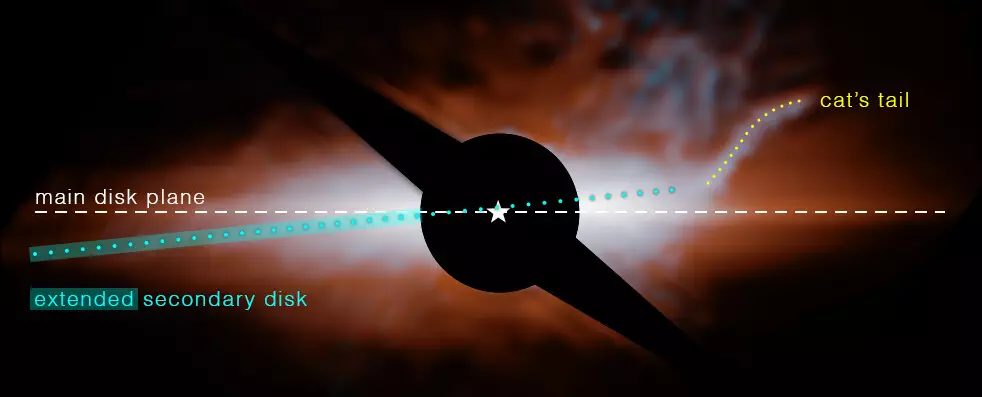You might think you know everything there is to know about Beta Pictoris, but prepare to be surprised. This dazzling star, which has been meticulously studied and imaged countless times, has managed to keep a few secrets hidden. Beta Pictoris, the second brightest star in the southern constellation Pictor, is not your average celestial body. With its remarkable disk, Beta Pictoris has captivated astronomers for years. However, thanks to the James Webb Space Telescope (JWST) and its remarkable sensitivity and advanced instrumentation, a new and extraordinary feature has emerged, revealing the star in a completely different light.
At just 20 million years old and located a mere 63 light years away, Beta Pictoris is practically our celestial neighbor. In 1984, observations unveiled its extraordinary dust disk, which is believed to be the birthplace of planets. Since then, the European Southern Observatory and the Hubble Space Telescope (HST) have confirmed the existence of two planets, aptly named Beta Pictoris b and Beta Pictoris c, orbiting within the dust disk. Although Beta Pictoris has been the subject of numerous studies, the JWST has shed new light on this enigmatic star.
Led by Isabel Rebollido from the Astrobiology Center in Spain, a team of researchers used the NIRI and MIRI instruments on the JWST to delve deeper into the structure of the Beta Pictoris disks. Their findings left them astonished. Not only did they discover a previously unseen second disk, slightly inclined to the first, but they also encountered an unexpected surprise within this second disk – a structure resembling a cat’s tail. The team affectionately named it “The Cat’s Tail.”
The MIRI data revealed an intriguing revelation about the two disks – they were composed of different materials and had different temperatures. The secondary disk and The Cat’s Tail were found to be hotter than the main disk. Interestingly, these regions appeared bright under mid-infrared wavelengths but had remained invisible in visible and near-infrared light. This suggests that both The Cat’s Tail and the secondary disk are made of dark material. The team theorized that this material might be highly porous, similar to the substances found on comets and asteroids.
While the nature of the dust can be studied and understood to some extent, unraveling the enigma of The Cat’s Tail presents a greater challenge. The team explored several hypotheses to explain its shape, but none provided a definitive answer. One favored theory suggests that The Cat’s Tail is the aftermath of an event that occurred within the disk approximately a hundred years ago. This event might have been a collision, which propelled the dust into a trajectory mirroring that of the object that caused the impact. However, the dust then spread out, creating a unique curved shape. Another contributing factor might be the perspective from which we observe The Cat’s Tail, which could create an illusion of steepness.
The recent discoveries made about Beta Pictoris have unveiled a star that is far from ordinary. Its surprising features and hidden secrets have left scientists intrigued and hungry for more knowledge. Further research and exploration will undoubtedly provide a more comprehensive understanding of these new revelations. These unexpected findings serve as a reminder that even the most familiar celestial objects can still hold surprises beyond our imagination. Who knows what other wonders await us as we continue to explore the vast expanse of the universe?


Leave a Reply